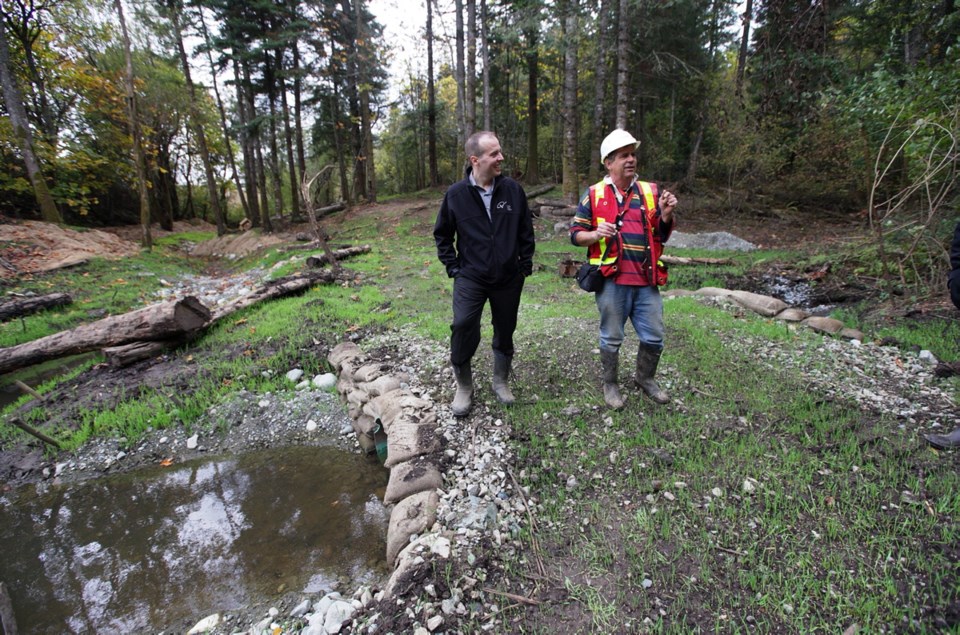Ian Bruce crouches in what is now a dry rocky section in TenTen Creek and puts his hands out to the sides while moving forward.
“I am the water.”
Bruce, Peninsula Streams Society executive co-ordinator, is using his body to show how the creek will flow now that a $540,000 remediation project on Victoria Airport Authority land is nearly complete.
The goal is to create a healthy creek where sea run cutthroat trout numbers can rebound, and possibly where coho salmon — not seen there for more than half a century— will return.
Geoff Dickson, president and CEO of the airport authority, said Thursday: “This speaks very much to our values. The environment has always been front and centre.”
The authority invested $450,000 into TenTen Creek and Transport Canada put in $90,000. The authority leases the land from the federal government.
This is the authority’s second creek restoration project. It completed remediation in 2012 to reduce contaminants in Reay Creek, which runs through the eastern industrial area of the airport lands.
The authority has spent close to $750,000 on the two creek projects, Dickson said. It is also working with the Tseycum First Nation and other stewardship groups on TenTen Creek.
Discoveries in the creek of little three-spined stickleback fish and some juvenile trout in recent years helped galvanize the project.
TenTen Creek originates on Mount Newton and runs about 1.3 kilometres through airport land into Patricia Bay. Its final leg is through a culvert.
This project was designed to keep sediments from clogging the creek and to stop erosion on steep banks that are part of an old federal landfill on the west side of Willingdon Road.
TenTen runs through the 1.6-hectare landfill, which was capped in 1996.
Two 100-metre-long sections have been improved.
A boulder-filled sediment trap has been installed off Willingdon Road. Workers will clean it out periodically. Otherwise, sediment could run into Patricia Bay and bury shellfish, said James Bogusz, airport vice-president of operations and development.
TenTen’s channel has been moved away from the steep banks that once abutted the creek.
A new filled area at the foot of the banks is covered with special matting to create a stable environment for plants, such as Red-Osier dogwood and willows. Boulders have been placed into the filled area.
The changes are all designed to stop erosion, Dickson said.
The creek is now interspersed with riffles and water-filled areas. Riffles are shallow areas of creeks, lined with rocks and gravel. As the creek moves over the riffles, it adds oxygen to the water.
The undersides of rocks in the riffles are home to aquatic insects eaten by young trout, Bruce said.
Each section of riffle is lower than the one before, allowing water to flow toward marine waters, he said.
Rocks in the riffles are carefully fitted to each other. Gravel creates spawning habitat.
Bruce is babysitting the stream, waiting to see how it works now that heavy rains are arriving. If needed, he will turn to a special stash of rocks to tweak the creek’s engineering.
“When you build these things, you have to look at the hydrology.”
Logs have been precisely placed in the sections of the creek to create areas that will be scoured by the flow. Its critical to create a complex habitat to suit the needs of the fish, which will hide in the new back eddies, Bruce said.



